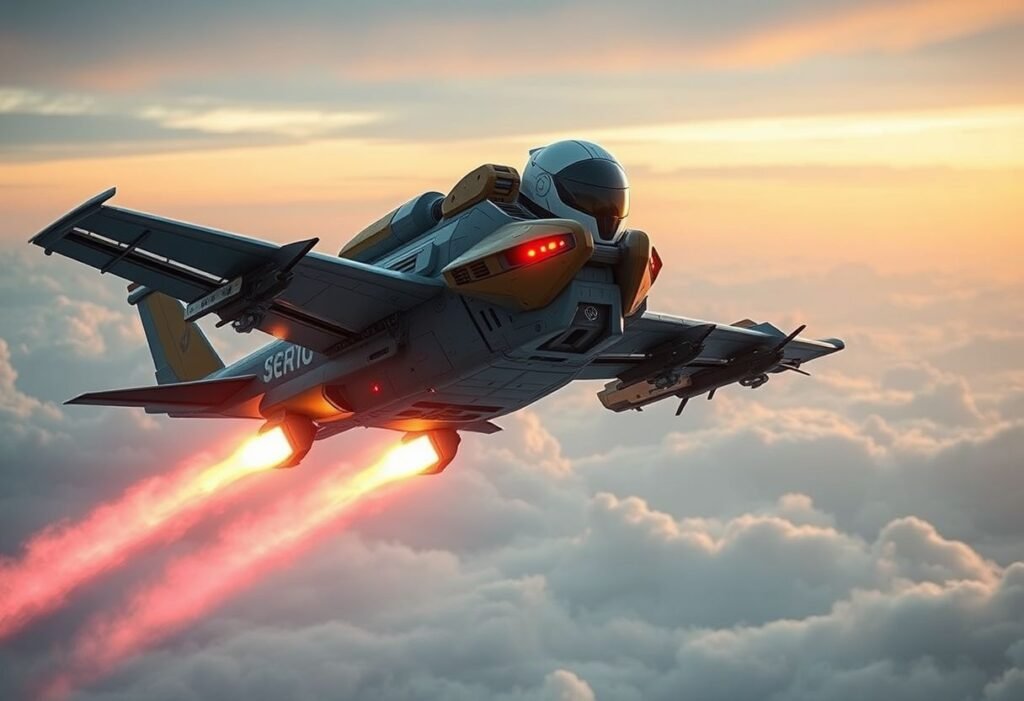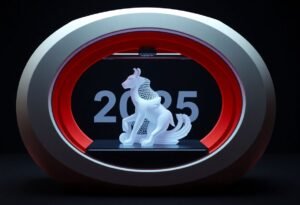This innovative project explores the development of a jet-powered humanoid robot designed to assist in disaster scenarios, highlighting the potential for rapid and effective emergency responses.
The Future of Rescue Operations
With natural disasters on the rise, the need for speedy and effective rescue solutions has never been more critical. Enter the iRonCub3, a groundbreaking jet-powered humanoid robot developed by researchers in Italy. This cutting-edge machine is designed to navigate challenging terrains and reach victims in remote locations quickly. Equipped with jet propulsion technology, it can soar above obstacles that might hinder traditional rescue efforts, providing immediate assistance in dire situations. This innovation could revolutionize how we respond to emergencies, saving lives by significantly reducing response times in hard-to-access areas, which is essential during critical moments.
Design and Capabilities of the iRonCub3
The iRonCub3 features a unique design that combines advanced robotics with the agility needed for flying. Integrated with multiple jets—one on each hand and two on its jetpack—the robot promises exceptional maneuverability. This allows for swift, aerial navigation while maintaining stability and control. The robot’s humanoid form not only enhances its operational capabilities but also makes it relatable to victims in distress. Its ability to interact with humans could foster comfort and reassurance during emergencies, showcasing the human-like features that set this robot apart from conventional machines. The continued development reflects a strong commitment to innovation in robotics and emergency response technology.
Safety and Reliability in Crisis Situations
Safety is paramount in any disaster scenario. The iRonCub3 is being engineered with state-of-the-art safety features to ensure reliability during critical moments. Extensive testing is planned to simulate various rescue conditions, assessing its performance under stress. Features such as self-stabilization and automatic hazard detection enhance the robot’s effectiveness, enabling it to navigate through precarious environments. Additionally, its AI-driven systems allow for real-time decision-making, crucial for adapting to unforeseen hazards during rescue operations. With these precautions in place, the iRonCub3 aims to provide not just speed, but also a high level of operational safety, ensuring trust from both rescuers and victims alike.
Collaboration and Research Development
Research and development for the iRonCub3 involve collaboration between various institutions, pushing the boundaries of what is possible with humanoid robotics. The Istituto Italiano di Tecnologia leads the charge, investing in sophisticated technology and methodologies. Here, engineers are experimenting with different jet propulsion systems, focusing on creating lightweight yet powerful components that enable the flying capabilities of the robot. This collaborative effort is not only fostering innovation but also ensuring that the project benefits from a diverse range of expertise, paving the way for further advancements in the field of rescue robotics.
Potential Impact on Disaster Management
The introduction of robots like the iRonCub3 into disaster management protocols has the potential to substantially alter existing practices. By integrating drones and humanoid robots into rescue operations, first responders could gather critical information before they even arrive on-site. This advanced preparation could lead to more informed decision-making and efficient resource deployment during emergencies. Furthermore, as these technologies evolve, we may see a future where robots seamlessly work alongside human responders, enhancing overall effectiveness and ultimately saving more lives during crises.
The Road Ahead for Humanoid Robotics
As the development of the iRonCub3 continues, the broader implications for humanoid robotics are immense. This project is part of a growing trend in which robots are designed to handle complex tasks that demand mobility and cognitive engagement. Industries beyond emergency response could benefit from similar technologies, including healthcare, manufacturing, and exploration. The lessons learned from iRonCub3’s development could inspire the next generation of robotic innovations. As we look towards the future, the focus will remain on refining these systems to ensure they are not only effective but also safe and user-friendly, marking significant strides in the evolution of robotics.
Disclaimer: The information provided in this article is for educational purposes only and should not be considered professional advice.





















